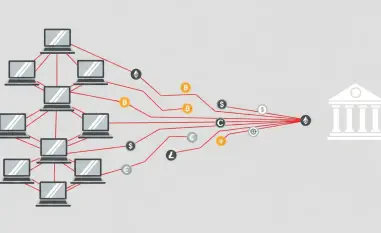In the ever-evolving landscape of cybersecurity, few threats are as insidious as supply chain attacks. Today, we’re diving deep into a recent incident involving the popular NPM ecosystem with Malik Haidar, a seasoned cybersecurity expert with years of experience protecting multinational corporations from sophisticated threats. With a keen focus on analytics, intelligence, and integrating business strategies into security frameworks, Malik offers unparalleled insights into the tactics of modern hackers. In this interview, we explore the anatomy of the recent NPM supply chain attack, the phishing techniques used to compromise maintainers, the impact on widely-used packages, and the broader implications for developers and organizations. Join us as we unpack the lessons learned and strategies to safeguard against such stealthy attacks.
How did this recent NPM supply chain attack unfold, and what made it so effective?
This attack was a textbook example of a supply chain compromise, targeting the maintainers of highly popular NPM packages. The attackers crafted a phishing campaign that preyed on trust and urgency, sending emails to maintainers asking them to update their two-factor authentication credentials. What made it effective was the precision—by impersonating a legitimate entity and mimicking the official NPM website, they created a sense of immediacy that pressured maintainers to act without scrutinizing the details. Unfortunately, some fell for it, leading to account takeovers and the injection of malicious code into packages with billions of weekly downloads.
Can you elaborate on the phishing email itself and how it managed to deceive its targets?
Absolutely. The phishing email came from a deceptive address that looked very close to the real NPM support domain, using something like support[at]npmjs[dot]help. It directed victims to a fake website that mirrored the official NPM site almost perfectly, complete with urgent warnings about account lockouts due to outdated security settings. This sense of urgency was a psychological trick—people tend to act quickly when they fear losing access. While some recipients did spot red flags, like odd phrasing or suspicious URLs, others were caught off guard by the polished mimicry and acted before double-checking.
What can you tell us about the impact on specific maintainers and the packages they managed?
One maintainer, in particular, fell victim to the phishing scam, and their account was swiftly compromised. As a result, 18 packages under their control were poisoned with malicious code. These weren’t obscure libraries—these packages collectively racked up over 2.5 billion weekly downloads, including widely-used ones like chalk and ansi-styles. Another maintainer from a different team was also targeted, but their group managed to block the attacker’s access quickly, though not before some damage was done to their Node.js distribution on NPM. It’s a stark reminder of how a single breach can ripple through an entire ecosystem.
How did the response play out once the attack was discovered?
The response was relatively swift, all things considered. The primary affected maintainer reported the breach to NPM immediately after realizing they were locked out of their account. NPM acted fast, starting to remove the malicious packages within two hours of the report. The maintainer also regained access to their account a few hours later, though the initial window of compromise was enough for significant damage. It shows how critical rapid detection and communication are in limiting the fallout from such attacks, but also how even a short timeframe can lead to widespread exposure.
What was the nature of the malicious code injected into these packages, and why was it so dangerous?
The malicious code was a browser-based interceptor, designed to hijack application APIs and network traffic with a specific focus on cryptocurrency transactions. Its primary goal was to swap out user-provided payment details—like wallet addresses—with those controlled by the attacker. What made it particularly dangerous was its stealth; it used string-matching logic to replace targets with look-alike values, making the tampering nearly invisible to users. It operated on multiple layers, altering website content, API calls, and even transaction data in the background, so even if everything looked fine on the surface, the underlying action was compromised.
How could this attack affect different environments, especially for developers and end users?
The impact varies depending on where the poisoned code ends up. For websites, if the malicious packages were bundled into frontend builds and served to users, the payload would execute in browsers, potentially compromising sensitive transactions. For developers, installing a tainted version on a workstation or through a CI/CD pipeline could embed the malware into applications they’re building. Environments handling cryptocurrency or payment flows are at the highest risk, while server-side usage might see minimal impact. The scary part is how quickly this spread—within just a couple of hours, the code reached a significant portion of cloud environments, showing how fast supply chain attacks can propagate.
What broader lessons can the cybersecurity community take away from this incident?
This attack underscores several critical lessons. First, phishing remains a potent threat, even against tech-savvy individuals, because it exploits human behavior more than technical vulnerabilities. Maintainers and developers need better training to spot suspicious communications. Second, supply chain security must be a priority—dependencies are a massive attack surface, and a single compromised package can affect millions. Finally, rapid response mechanisms and monitoring are essential. Organizations and platforms like NPM need robust systems to detect and mitigate breaches in real time, because even a brief window of exposure can have outsized consequences.
What is your forecast for the future of supply chain attacks in ecosystems like NPM?
I expect supply chain attacks to grow in both frequency and sophistication. As ecosystems like NPM become even more integral to software development, they’ll remain prime targets for attackers looking for high-impact, low-effort wins. We’ll likely see more socially engineered attacks, like phishing, combined with advanced malware that’s harder to detect. On the flip side, I think we’ll also see stronger defenses—more automated security checks, better authentication protocols, and community-driven efforts to secure open-source software. The challenge will be balancing accessibility with security, but if we don’t act proactively, the scale of these attacks could become catastrophic.













